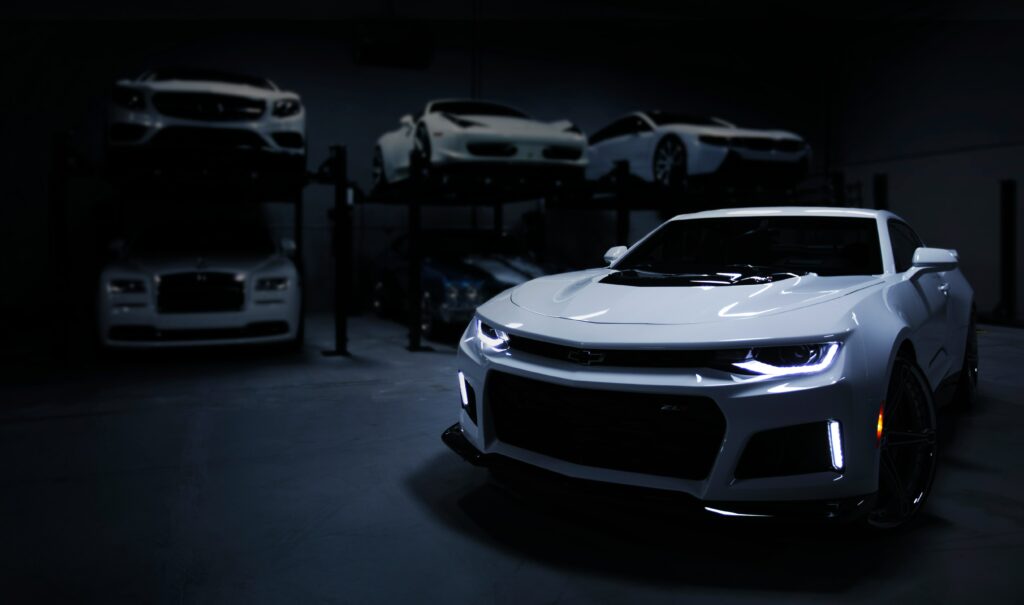Paint Protection Film (PPF), or clear bra, is a transparent polyurethane film designed to protect your vehicle from the elements of the road. This shield is a barrier between your car’s glossy finish and road debris, bird droppings, bug splatter, and UV rays. This keeps your vehicle looking factory-fresh for longer! PPF can be applied at home and by professional installers, so you may wonder which application is better. Let’s explore the differences between DIY vs. professional installation of PPF, helping you make an informed decision when it comes to protecting your vehicle!
DIY Installation of PPF
DIY PPF kits can be purchased at many auto retailers. These kits give you the film and tools to apply this clear coating to your vehicle. Perhaps the most enticing aspect of this application option is the potential for cost savings. Professional installation can be expensive due to the additional labor and maintenance costs. You can eliminate these additional costs by tackling this application yourself, making DIY installation a budget-friendly option. A DIY PPF installation also allows you to work on your car on your own time. This eliminates the need for you to be without your vehicle during the week, giving you the convenience of doing the application at your leisure.
Applying PPF can be tedious, requiring great attention to detail and a steady hand. A DIY kit may leave your film at a higher risk of bubbles, misalignments, and imperfections that can impact the aesthetics of your vehicle.
Though DIY kits may lead to cost savings and convenience, car owners must weigh these benefits with the potential application challenges associated with self-installation. Patience, attention to detail, and determination are prerequisites for those wanting to go the DIY route for PPF installation.
Professional Installation of PPF
Professional PPF installers are experts at PPF applications. These individuals expertly install this film regardless of your vehicle’s shape, contours, and features. Their experience ensures a high-quality, error-free application. These professionals have access to advanced cutting tools, allowing them to cut the PPF to the specifications of your bumper, hood, headlights, and doors. This ensures that the film fits your vehicle perfectly, minimizing the risk of error. The outcome of a professional installation is that the paint protection film seamlessly integrates with your vehicle’s contours, providing optimal protection without sacrificing the beauty of your vehicle’s finish.
Factors to Consider
Though the application processes for a DIY and professional installation are very similar, there are several factors to consider when choosing between these options. The first thing to consider is the type and size of your vehicle. This can play a crucial role in the cost and complexity of PPF installation. Oversized vehicles and those with intricate curves and contours can present challenges for DIY installation. DIY installers may struggle with a seamless application, leading to permanent bubbles and imperfections in the film. However, professional installation for this kind of vehicle may be more costly.
Evaluating your skill set when deciding between DIY and professional PPF installation is essential. A DIY application may be a feasible option if you have experience with similar precision-oriented tasks. For those lacking confidence or patience, seeking a professional may be the way to go.
Finally, budget plays a significant role in this decision. DIY kits are typically more budget-friendly, making them an excellent option for car owners on a tight budget. Alternatively, professional installation is more expensive but may produce a more seamless, flawless finish.
These factors can help you decide about PPF installation for you and your vehicle.
Tips for DIY Installation
If you decide to go the DIY route, here are some tips for getting a great application:
-
Prepare the vehicle.
Be sure to clean the exterior of your vehicle thoroughly. Any dust or dirt on your car will be trapped under the PPF, leaving an imperfection. Your workspace should also be free of debris.
-
Use the right tools and materials.
Invest in a high-quality DIY PPF kit. This ensures that the film and tools you use are designed to withstand the elements of the road.
-
Be patient.
Patience and attention to detail are the keys to a successful DIY application. Take time cutting and applying the film to reduce the risk of bubbles and misalignments.
DIY installation can be an excellent option for budget-conscious car owners. However, the success of this kind of application requires meticulous preparation, the right tools, and patience.
Choosing a Professional Installer
If you choose the professional installation route, it is vital to conduct thorough research to find reputable installation companies near you. Read reviews and testimonials online, as these can clue you into the expertise and quality of each company. Many PPF companies also offer free quotes. These quotes, along with the reviews, can help you determine the overall value of each installer. In addition to the quotes, be sure to ask about warranties. Most reputable PPF installers provide warranties that cover issues with the film, like yellowing or bubbling. These warranties ensure the protection of your investment and are another advantage of going the professional route.
Wraptitude Can Help!
Ultimately, you want to choose a PPF installer that you can trust with the protection and aesthetics of your vehicle. Wraptitude is your friend in the Paint Protection Film Industry. Located in Elkhart, Indiana, the installation experts at Wraptitude provide seamless PPF application to any vehicle. Reach out today for a free quote and experience the benefits of a professional installation!

